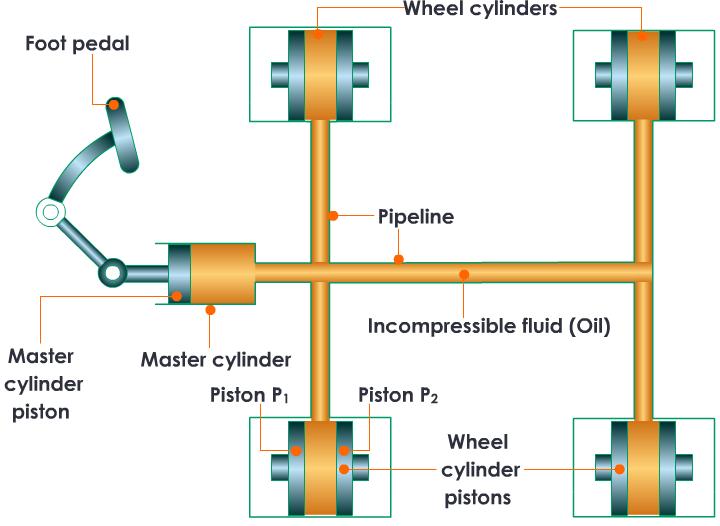Before the invention of hydraulic brakes, various systems of levers and pads were developed, but their main drawback was that they needed regular adjustment to maintain equal braking on all wheels. Hydraulic brakes, invented in 1918 by Malcolm Loughead – an Aviation and Auto Engineer, addressed this problem and gave much more responsive braking.
Hydraulic brakes work by having a series of pistons connected to the brake pedals and the brake pads themselves. These are all interconnected by a central “reservoir” of non-compressible fluid, initially a mix of water and alcohol. The differences in diameter of the pistons means that the same pressure inside the system magnifies the force applied to the brake pedal.
“My hydraulic brakes stop on a dame-and with change left over.”- Malcolm Loughead, aviation and auto engineer.
This greater force allowed the brakes to be applied much more firmly and so bring to a quicker halt.
The system was taken up by the Duesenberg motor company, and the first passenger car to use a hydraulic braking system-the “model A”-went into production in 1921. Despite the system’s superiority to previous braking systems, other car manufacturers were slow to follow, possibly because of early problems with leaks. Gradually, however, as technology for lines and pistons improved, hydraulic brakes were introduced universally, and in 1938, Ford-the last manufacturer to catch on-finally switched over on all its cars.
Video –



